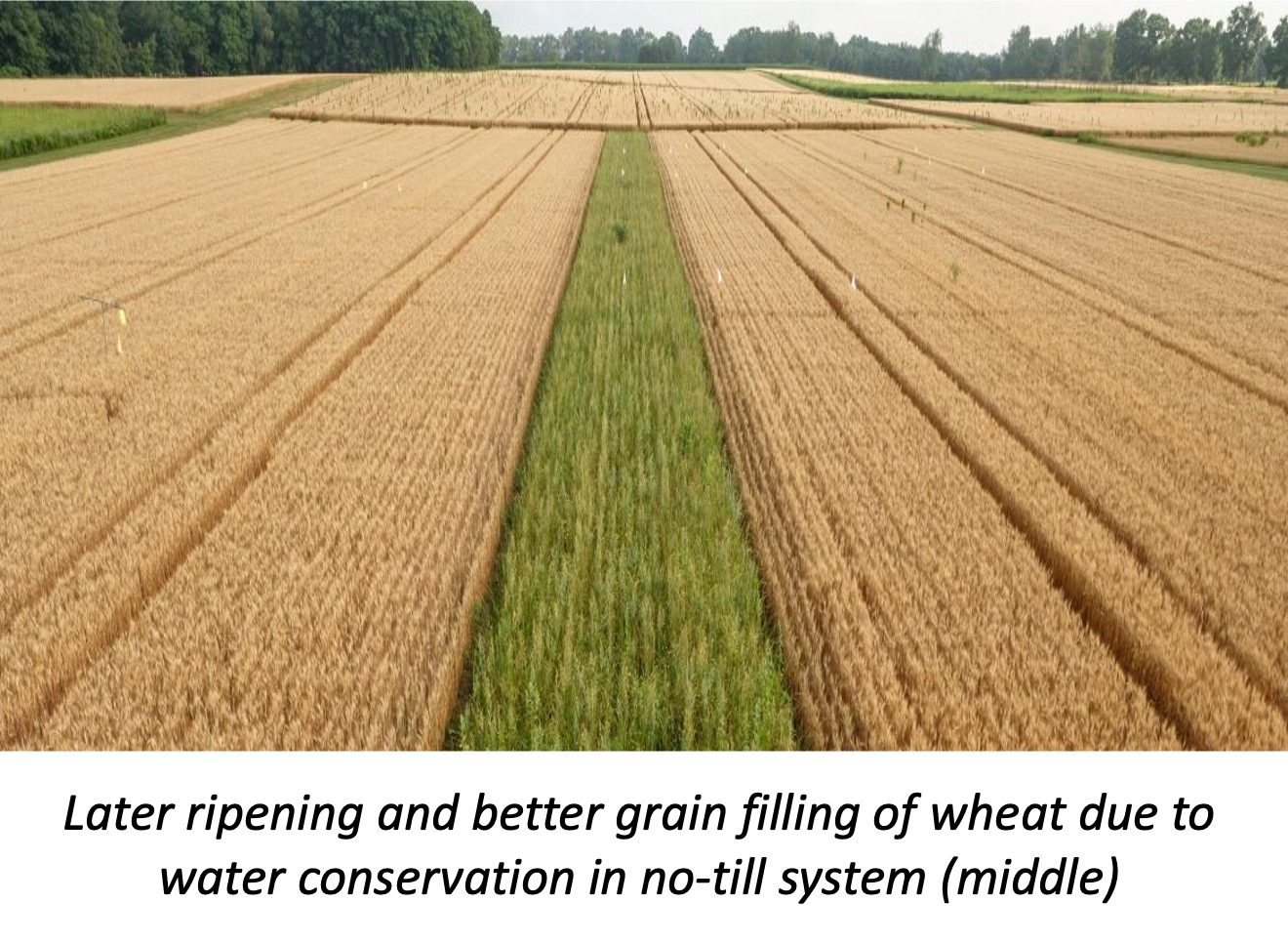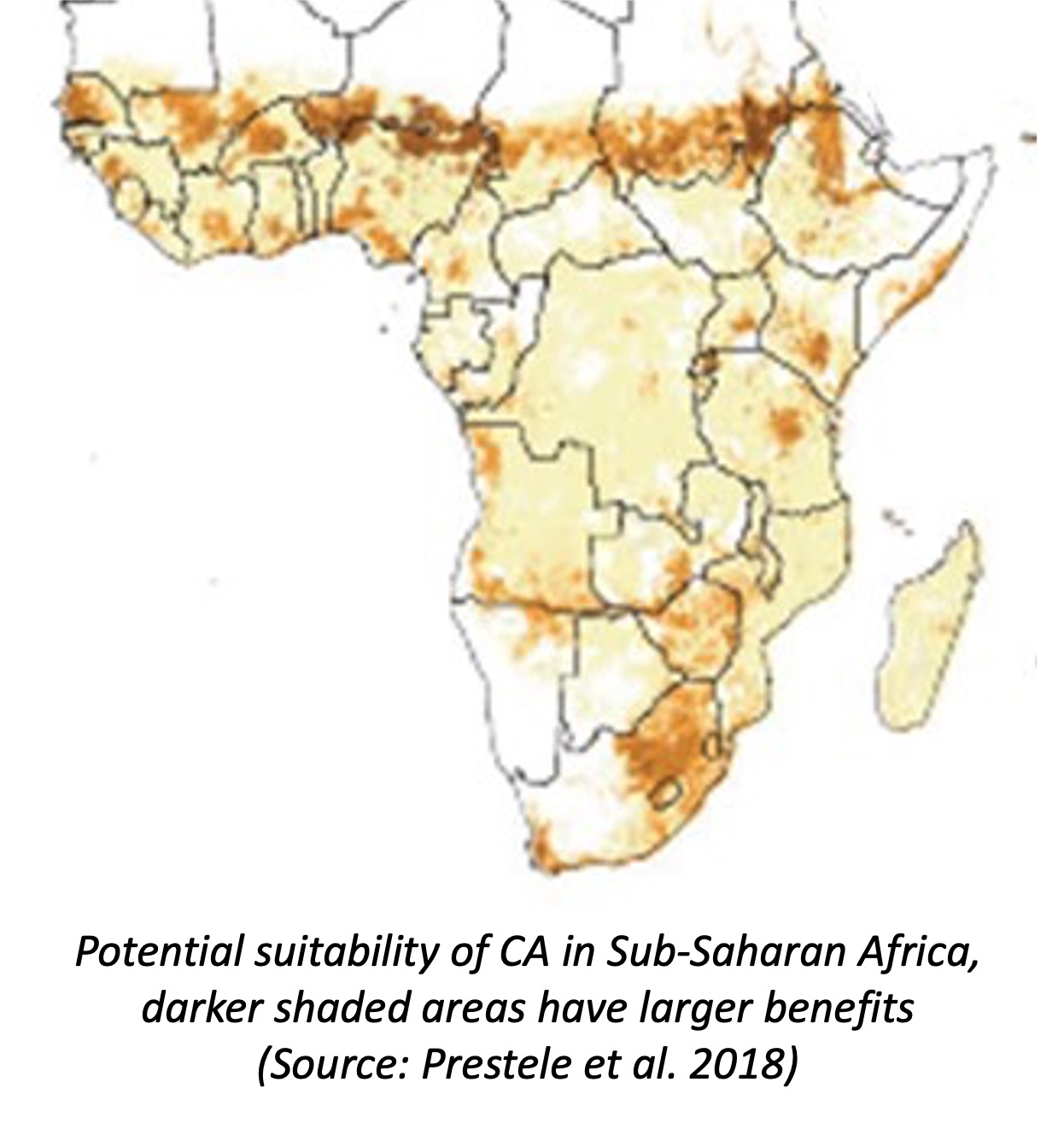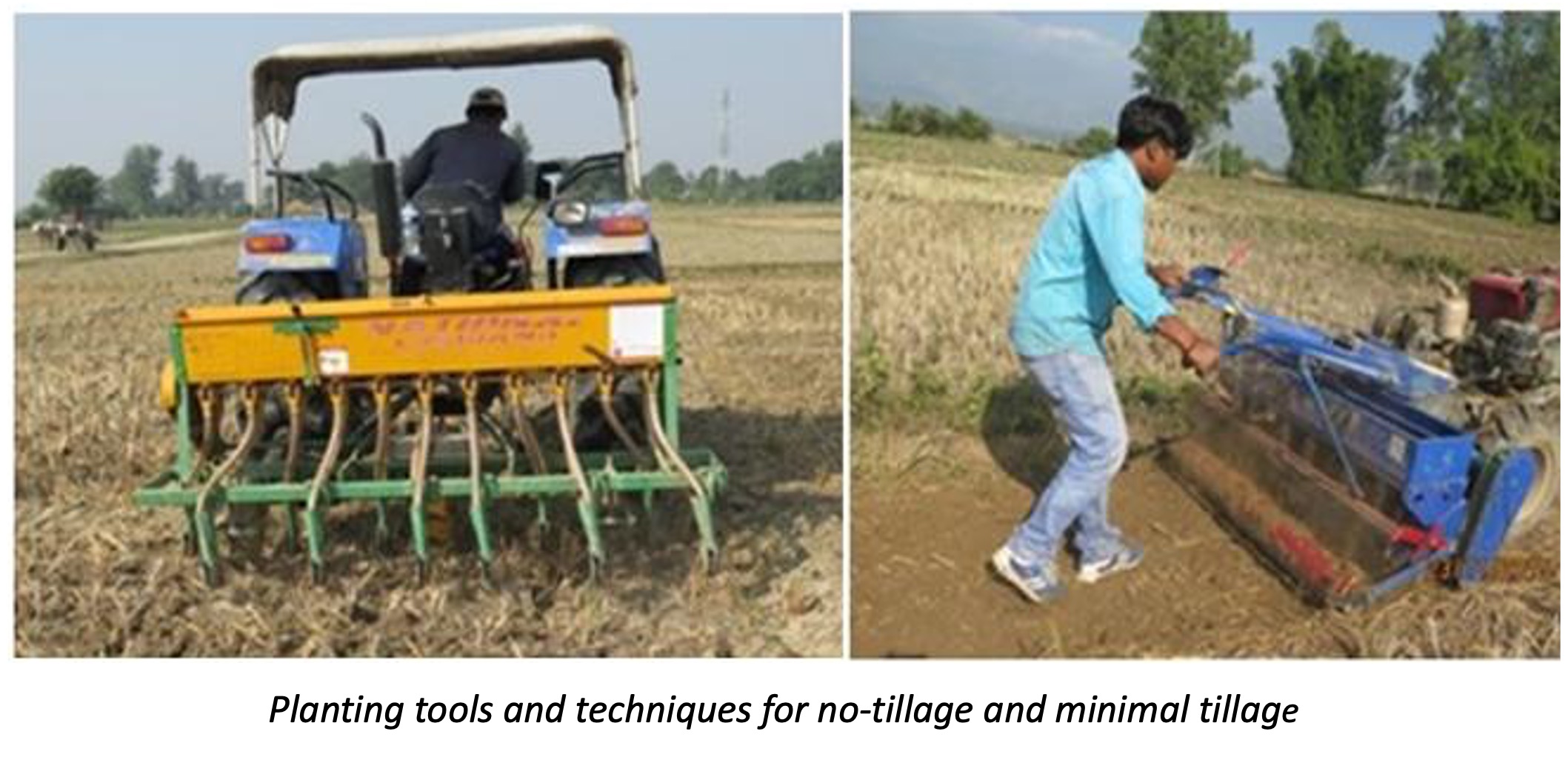Minimal Tillage and Surface Mulching of Soils
Summary
Declining soil fertility and increasing water stress are two of the most pertinent challenges for wheat production in dry tropical and subtropical regions from Sub-Saharan Africa. Farmers traditionally make excessive use of tillage for managing weeds and return very limited amounts of organic matter to soils which causes a gradual degradation of key processes such as nutrient exchange and water retention. Available water resources are becoming limited due to increased frequency of drought spells, high intensity rains and overexploitation for agriculture. Besides the use of improved varieties and efficient irrigation there is need for maintaining and restoring soil fertility levels to successfully enhance wheat grain yield levels and strengthen its resilience to water shortages. Conservation agriculture (CA) involves a set of soil and crop management practices that have been widely demonstrated to offer major advantages for wheat production in dryland farming systems. The strategy has a low implementation cost, saves on fertilizer, labour and irrigation spends, and gives stable high grain yields and under good and bad rainfall conditions, thereby improving the net income of farmers. Adopting CA also enriches soil biodiversity, mitigates emissions and sequesters carbon which benefits the environment and climate.
About the Solution
Conservation agriculture exists of three adjoined principles: 1) minimal soil disturbance by no or reduced tillage, 2) retention of biomass residues on top of the soil surface, and 3) rotation with N-fixing legumes or cover crops. The strategy has proven to enhance soil quality, water use efficiency and yield stability, and diminish expenditures on inputs, energy and time in dryland wheat farming across the world. Practicing CA benefits a number of key processes that influence soil aggregate formation, water infiltration, nutrient availability, acidification, salinization and canopy temperature regulation. Farmlands that are minimally disturbed, covered by a mulch layer and seasonally rotated show less drought and heat stress on crops then those with intensely tilled bare soils, which provides in effective climate change adaptation of the food system. Soil drying and weed growth are slowed down under CA practices making that farmers can save on irrigation water and herbicide application. Rotating between wheat and soybean, rice, cotton or other types of crops has advantages for managing soil nutrient supply, and pest and disease build-up.
The principles of conservation agriculture can be applied for wheat farming systems with a range of soil types and water regimes in Sub-Saharan Africa. Improvements of water use efficiency realized by minimal tillage and surface mulching are advantageous for both rainfed and irrigated production, and dry sub-humid and semi-arid regions. The soil and crop management practices are fully compatible with raised bed planting and furrow irrigation, but not with flatbed irrigation since the residue cover will block water flows and get washed away. Conservation agriculture systems allow wheat farming to be expanded into non-traditional growing areas where the availability of water resources and native properties of soils are inadequate for raising the crop under conventional practices, which is the case for large areas in the dryland belts of western, eastern and southern Africa.
The exact setup and procedures of conservation agriculture systems greatly vary depending on local management recommendations, agroecological characteristics and farmer objectives. Zero tillage means that soils are never ploughed but this is only possible on farmlands that do not suffer from acute compaction, crusting and erosion. Reduced tillage may involve that ploughing is less frequent at intervals of 2-5 years, and/or is restricted to lines or strips instead of the whole field. Permanent covers for soil surfaces are typically provided by leftover crop residues but some cover crops can also be used. There is need to cover at least 30% of soil surfaces before crop yields are effectively increased under CA, and this requires about 3 ton of material per hectare. A range of rotational crops may be used like rice, cotton, soybean, common bean or cowpea depending on farmer practices, production objectives and most importantly soil and plant health expertise for management of pests and diseases, and nutrient stocks.
Practicing CA requires the use of quality seed from improved varieties of bread and durum wheat that possess high yield potential, heat tolerance and pest resistance for achieving satisfactory production levels. A range of tools for direct seeding with minimal soil disturbance can be used like disc seeders that are drawn by a tractors or animal, and dibble sticks or jab planters that are operated by hand. The spacing between rows and plants, and the seed rate can be the same as the density employed for conventional system. Recommended rates of inorganic fertilizer and animal manure have to be applied in planting holes or via topdressing so high grain yields and water use efficiency are realized. Materials for covering soil surface can be obtained from stover residues of the previous cropping phase on a field or may need to be carried from elsewhere. Soils under CA management have to be treated with herbicide for controlling weed encroachment, and spraying of insect repelling agents on the mulch layer may be required to keep it in place for longer.
Commercialization
Commercially available
Solution Images
Institutions




